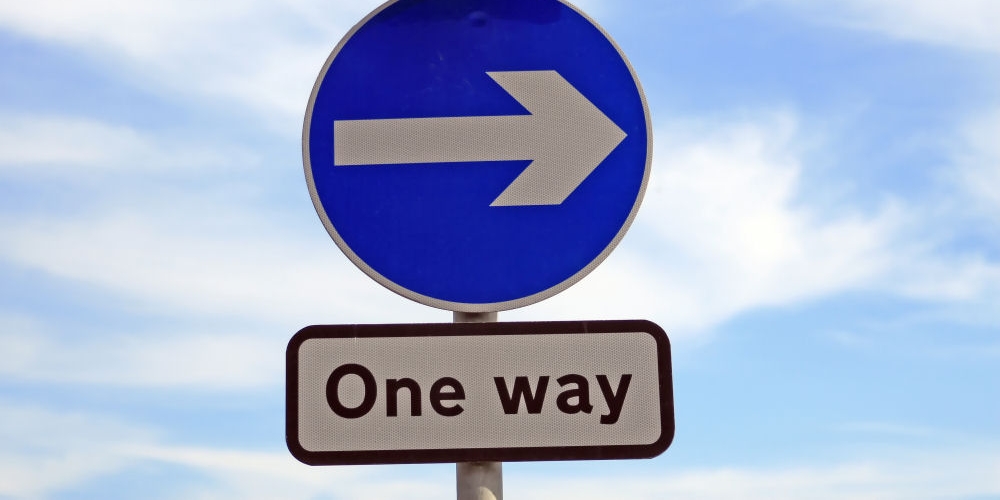
If you get caught driving the wrong way along a one-way street, it won't be a good excuse to say:
"But I was only driving one-way, officer!"
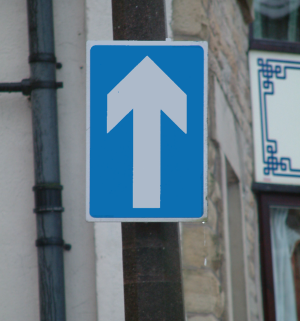
Much better to recognise the signs and never find yourself in that situation.
One-way systems help to smooth the traffic flow and ease congestion around busy central areas of towns and cities.
Some new drivers find multi-lane one-way systems a little bit daunting, but when you get used to them, they can be easier than two-way roads.
But there are some essential points that you must bear in mind when driving on one-way streets:
Making sure that you are in the correct lane,
Being alert for pedestrians
Being aware that traffic might be passing to your left or parking on the right
All of these things and a few more can be easily dealt with if you get into the habit of maintaining 'all-around awareness'.
One-way streets during the driving test vary from area to area. On some test routes, there might only be a single one-way street; on others, there could be multi-lane one-way systems around town centres.
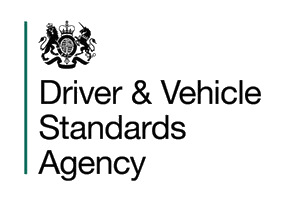
Regardless of the type of one-way system you encounter, you must demonstrate correct lane positioning and a good awareness of other road users.
The examiner will want to see:
Good lane discipline
Awareness of other road users
Correct positioning for junctions
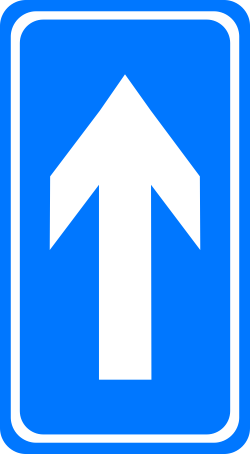
One-way road
The signs below are not exclusive to one-way roads and there may be two-way traffic - however, they instruct you to go in one direction.
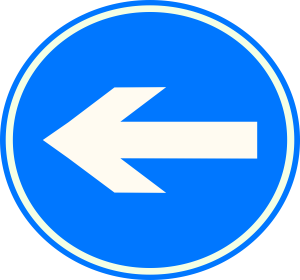
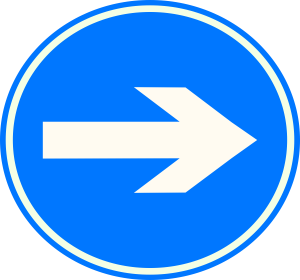
You must turn left/right at the location of these signs
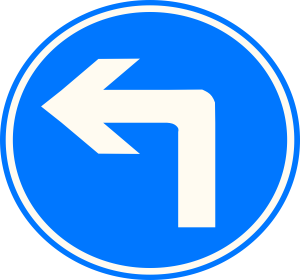
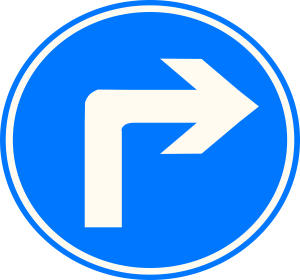
You must turn left or right ahead
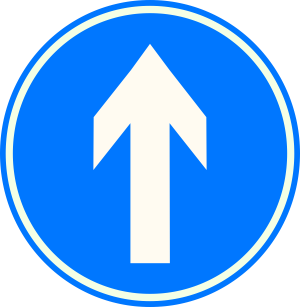
Ahead only - note that this is not the same as the one-way street sign!
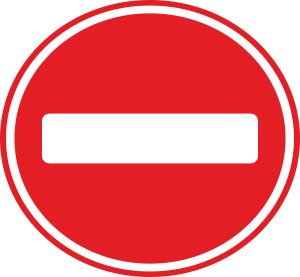
No Entry
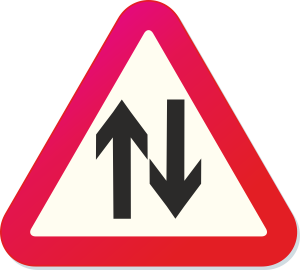
Two way traffic. Seen when leaving a one-way system or
dual-carriageway
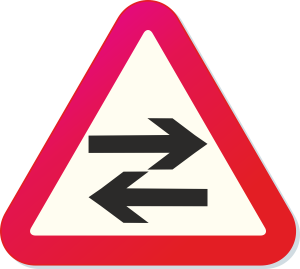
Two-way traffic crossed a one-way road.
Typically seen when leaving a one-way street at a T-junction
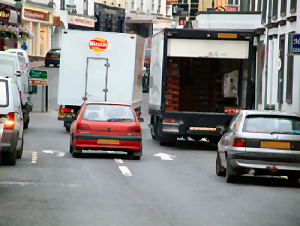 Sometimes you will enter one-way systems from T-junctions. Other times the junction will be more like entering a roundabout.
Sometimes you will enter one-way systems from T-junctions. Other times the junction will be more like entering a roundabout.
The most straightforward entry to a one-way system is where the road you are on becomes a one-way street without any junction.
Although it might seem obvious, your first job is to recognise that you are on a one-way road.
Sometimes you might not be sure whether you are on a one-way street or not, for example, if the signs are blocked from view by a large vehicle. Look at the parked cars in the picture; they all face the same way as the traffic flow. This is a clue that you are on a one-way street. In the picture, you can also see road markings telling the drivers that they are in a one-way system - and which lane to take. The road marking are especially useful because the delivery vans are blocking the view of the one-way signs.

When entering a one-way street from a side road, there will be a one-way sign showing the direction of the traffic flow. The blue circular sign shown here tells you that the traffic flow is to the right and that you must go that way.
Once you have entered the one-way system, choose the most appropriate lane for your destination.
Unlike other roads, the 'keep left' rule does not apply in one-way systems - traffic is also allowed to pass on both sides.
Although you can pass on either side, you shouldn't change lanes to get past the vehicle in front - your destination will determine the lane you choose. Signs and markings tell you which lane you will need for your destination:
Move into the appropriate lane as soon as possible after entering the system.
You may occasionally come across a one-way system with no road markings (perhaps on a recently resurfaced road); in these circumstances, you should use your skill and experience to guide you to the best 'imaginary' lane position. In other words, drive as if the lanes were marked.
By keeping to the centre of your lane without straddling the white lines, you will help other drivers recognise your intentions.
If you are unsure which lane to choose, move to the right and drive around the one-way system again; this will give you time to find the information needed to choose the best lane the second time around.
Filtering is the term that describes keeping the car moving when you change lanes instead of stopping to wait for a gap in the traffic.
Ask your instructor to demonstrate the filtering manoeuvre and how it applies to your local one-way system.

In the example of filtering shown above, the driver of the red car approaching from road 'A' would keep moving along lane 'B' until there was a safe opportunity to filter into the traffic. To filter safely, it's necessary to match the speed of the traffic already on the road/lane you are joining.
By keeping your car moving, you will significantly reduce the risk of being hit from behind by drivers who are not looking where they are going.
Many one-way systems are put in place to ease traffic flow in busy town centres, so you can expect all the usual hazards found in busy town and city areas.
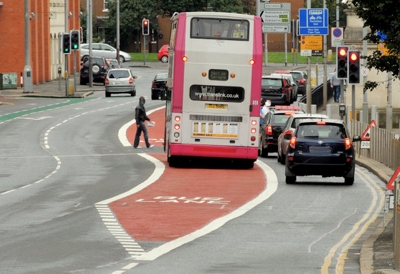 These include:
These include:
Pedestrians
Cyclists
Slow moving traffic
Delivery vehicles
Taxis
Buses
When you are in the right-hand lane of a one-way system, you must be careful to look out for pedestrians, especially on the right - they may step off the kerb looking in the wrong direction and thinking that the road is clear - expecting you to be driving on the right-hand side of the road.
In slow-moving traffic, cyclists and motorcyclists might pass on either side - make full use of your mirrors when stopping and starting in traffic. Pedal cyclists don't always follow the rules - you might meet them coming the wrong way towards you. Take special care when changing lanes, especially when moving to the left - remember that other drivers might be passing you.
Taxis might stop on either side of the road to pick up or drop off their passengers.
Watch out for buses leaving bus stops on the left - they might immediately move across into the right-hand lane.
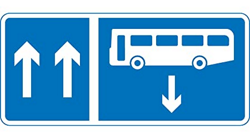 The photograph shows an unusual one-way system in Belfast with a bus lane in the centre of the road. Drivers must not drive in or cross over this bus lane - or they risk a fixed penalty.
The photograph shows an unusual one-way system in Belfast with a bus lane in the centre of the road. Drivers must not drive in or cross over this bus lane - or they risk a fixed penalty.
Although uncommon, some one-way systems have 'contra-flow' bus lanes (as shown on the sign). These are dedicated lanes in which buses travel against the main flow of traffic - never drive into a contra-flow bus lane.
When a one-way street ends at a T-junction, it is vital to select the correct lane. If you turn right, this will be the right-hand lane, as shown below.
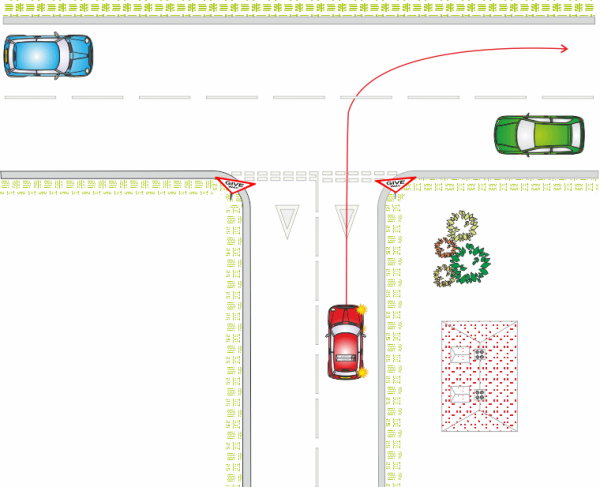
 One-way systems Quiz...
One-way systems Quiz...Click here to complete the quiz for this lesson
(The page will open in a new window/tab)
You will find references for the answers in this lesson.
You can check your answers as you go along, or complete the full quiz before checking.
Leaving the check to the end is a good way to test yourself.
When you check or review your answers you will get a brief explanation of the answer.
Good Luck!